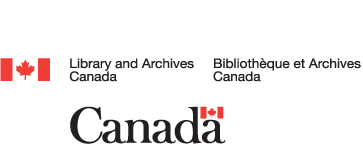Introduction to The Digital Page
Scope
P.K. Page’s career as a writer and visual artist extended over some eight decades, from 1932, which saw her first known publication, to 2010, the year of her death, in which she published six books. Throughout these years, she produced some of the most admired and beloved poems in Canadian literature—and many fine works in the genres of fiction, children's stories, non-fiction, and travel writing, as well as a voluminous correspondence. In the second half of her career, under the name P.K. Irwin, she also produced a substantial body of visual art, which has only recently come to be recognized for its own excellence as well as for the light it throws on PK’s writing. (To avoid the cumbersome “P.K. Page/Irwin,” The Digital Page will use “PK,” following the practice of her friends and colleagues.) The Digital Page will encompass the whole range of PK’s creative achievement, emphasizing its genesis and the social context in which this genesis took place.
Studying/Reading
The Digital Page has as its aim to make PK’s immense and richly varied work available both to a general and to a scholarly public. As a digital resource intended primarily for study, it will be supplemented by a series of reading texts in print and e-book format, published by PK’s favourite publisher, the Porcupine’s Quill. Three volumes have already appeared, Kaleidoscope: Selected Poems of P.K. Page (edited by Zailig Pollock); Brazilian Journal (edited by Suzanne Bailey and Christopher Doody) and Mexican Journal (edited by Margaret Steffler).
The Digital Page Reader
The Digital Page makes use of the Digital Page Reader, especially designed for this edition, which allows the user to view transcriptions of all versions of PK’s texts side-by-side with images of the documents on which the transcriptions are based. Where these documents show evidence of PK’s revisions, the revisions are presented in a clear and concise manner, avoiding esoteric symbols and abbreviations, and each point in the transcription is linked to the equivalent point in the document image. In other words, at each point, the reader can check the map against the territory. PK’s visual art will be presented with a slightly modified version of this text-image tool.
Genesis of the Text
The Digital Page Reader also enables the reader to trace the genesis of any work from its very beginnings through to its various forms of publication, using “revision points.” That is, it is possible, at any point in any version of a work, to call up all variant readings that occur at the equivalent point in other versions of the work, without the highly abbreviated, cryptic presentation associated with traditional print-based textual apparatuses.
Timeline
At the heart of The Digital Page will be a timeline based on Sandra Djwa’s biography of PK, Journey with No Maps. The many thousands of separate items included in the edition (poems, letters, paintings, etc.) will each be linked to this timeline. In other words, from any individual item it will be possible to go directly to the relevant date on the timeline; and from any date on the timeline it will be possible to go directly to any item associated with that date. The timeline will also be linked to numerous photos, videos, and audio files relevant to PK’s work and milieu. This will enable the user to more thoroughly grasp the genesis of PK’s career as a whole and the social context in which this genesis is embedded.
Bibliography and Database
A continuously updated bibliography of PK’s published and unpublished works will be generated from the Digital Page database, as the edition proceeds. The database will be accessible to users who wish to consult it directly.
Facetted Searching
Facetted searching of The Digital Page will allow the user to search not only PK’s own words but various attributes or “facets,” such as date, or genre or medium (for the visual art).
Agile vs. Waterfall
The Digital Page is not complete. Like all projects in the ever-changing field of digital humanities it is in progress, a progress that will end only if, some day, the project is abandoned. However, the basic structure of the edition is now in place and much of its content is ready for presentation. The editors have therefore decided to go public with The Digital Page now rather than later, on the understanding that it will be undergoing continuous change and augmentation in the years to come. It is hoped that this “agile” approach will encourage users of The Digital Page to communicate on an ongoing basis with its editors and thus contribute to its continuous improvement, something that would not be encouraged by a “waterfall” approach which would entail making The Digital Page, or sections of it, available only when completed.



























